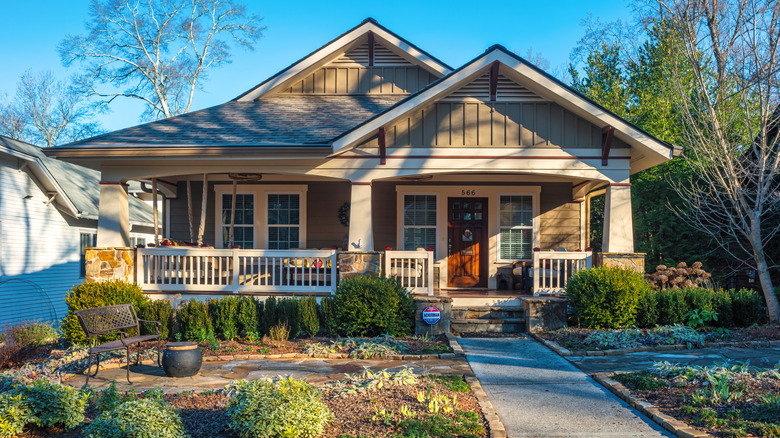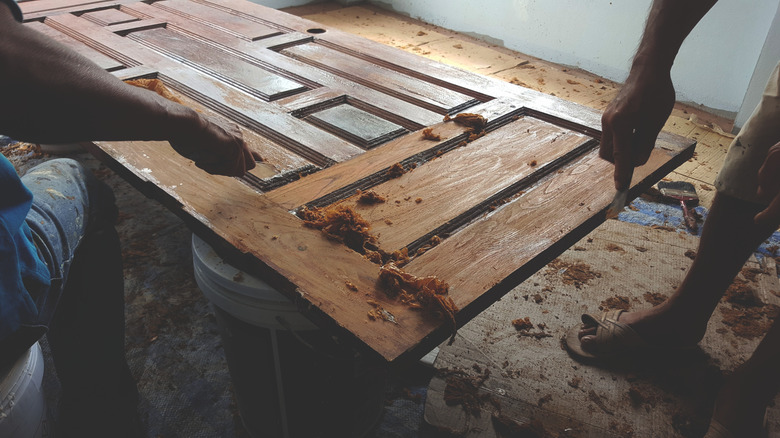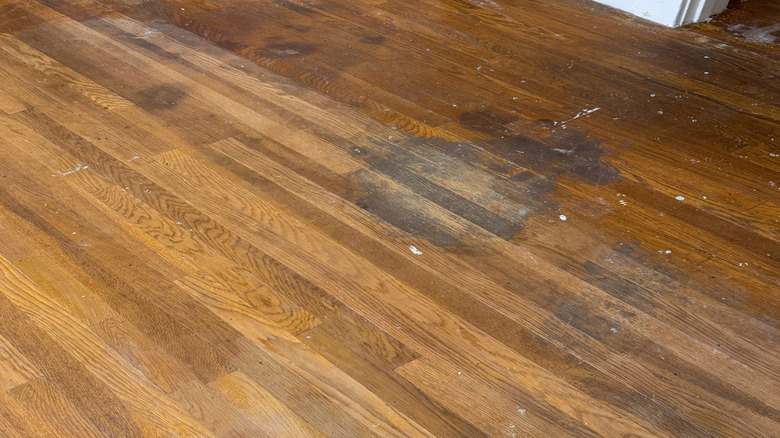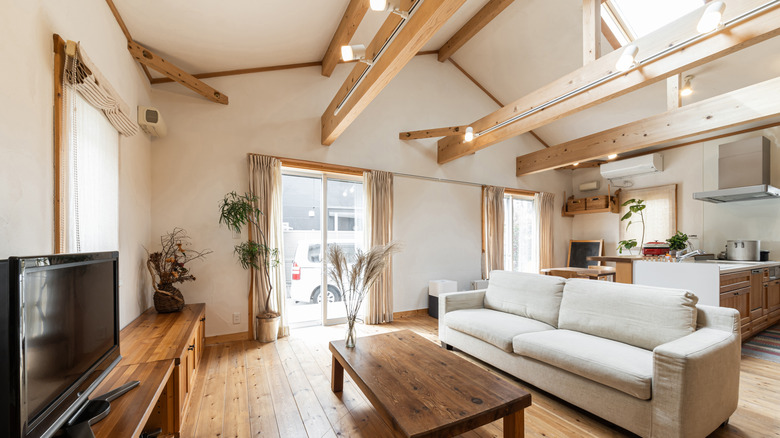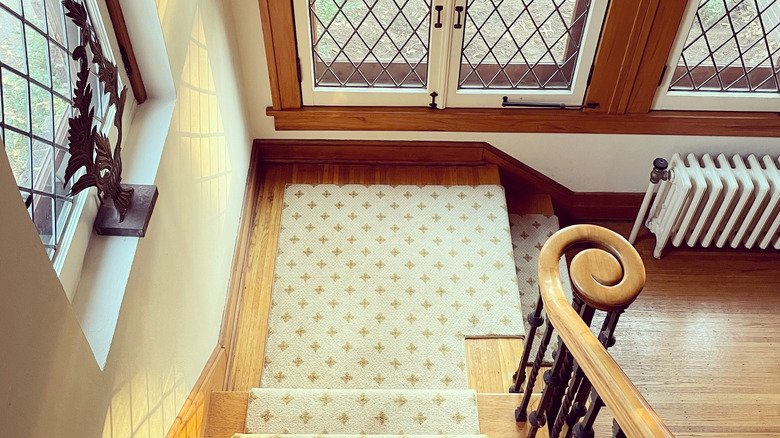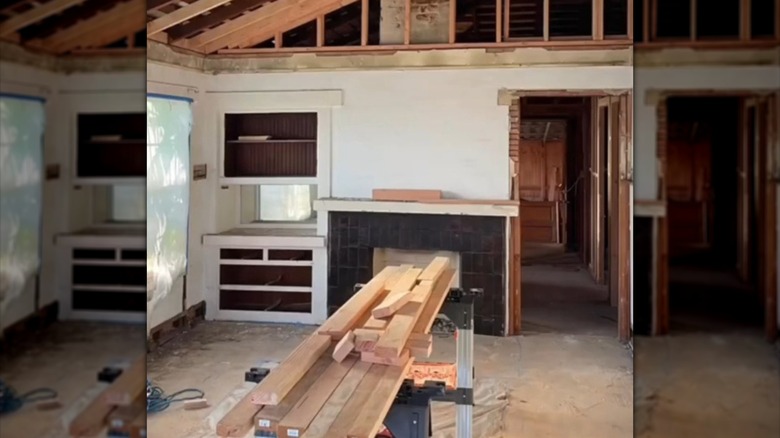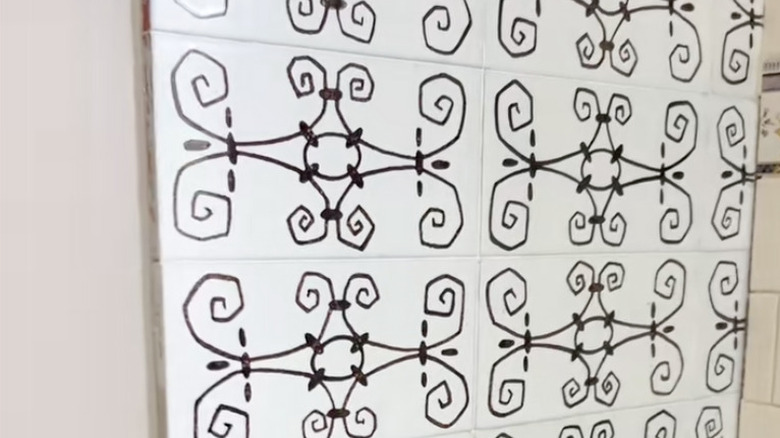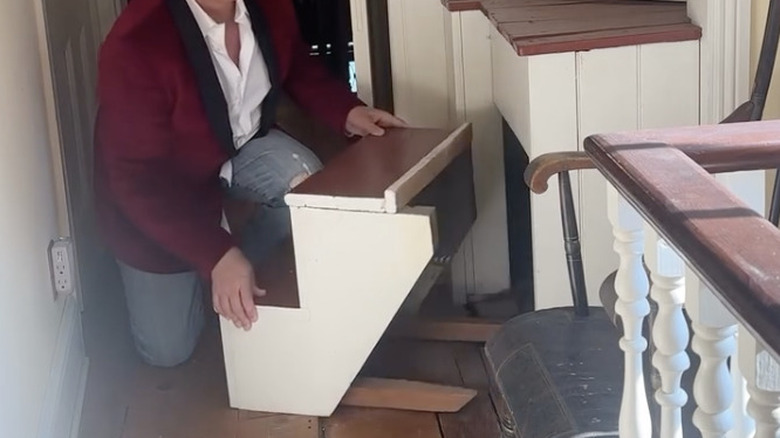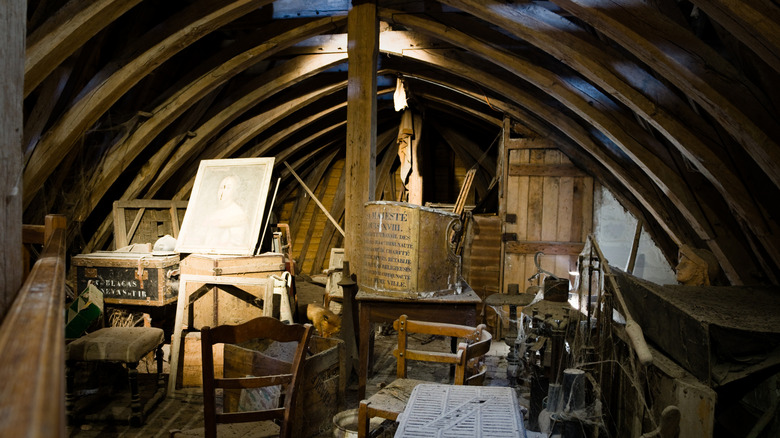10 Hidden Gems To Look Out For When Renovating A Craftsman Home
Before diving into all the amazing finds you may encounter when renovating a Craftsman home, you may first want to learn about what a Craftsman-style house is. By understanding the common features and building designs of this home style, you can better prepare yourself to uncover and revive the hidden gems hiding under years of paint and drywall, which may have tarnished the home's original beauty.
Craftsman houses began popping up in the early 20th century and relied on simplistic designs that focused on handcrafted work. The style stripped away the ornamental embellishments that were common before 1900, creating a cozier, more welcoming feeling with unique features for later generations to discover. Some features that new homeowners find while renovating their homes include original woodwork in the walls (plus the floors, doors, and ceilings), built-in elements that were hidden over time, fireplaces, and additional secrets unique to each home. Here are 10 hidden gems to look out for when renovating your Craftsman.
Natural wood doors
If you see painted doors in your Craftsman home, all may not be lost. (Maybe the previous owners just followed David Bromstad's controversial advice about painting over natural wood doors to create an HGTV look.) With a little elbow grease and some paint-stripping techniques, you may find that your home still has its original, natural wood doors. If so, you can scrape off those layers of paint to restore the doors to their original charm. Then, seal them with wood oil or stain to give them a revived (but still natural) charm.
Hardwood floors
In renovated Craftsman homes, you may see modern flooring designs such as linoleum, vinyl, or carpet. With some renovation, however, you may be able to unearth the original hardwood flooring hiding beneath those modern cover-ups. Floors in Craftsman houses are generally made of pine, oak, hickory, or maple. And the best part is that they're relatively simple and affordable to refinish yourself. Even if they're stained and worn out, you can sand them down, prime them, and add a sealant to refinish them as if they were newly installed.
Exposed beam ceilings
Exposed beam ceilings are one of the most iconic features of Craftsman homes, but for whatever reason, some homeowners over the years have decided to cover them up. If you bought a Craftsman but feel like it's missing that bit of charm on the ceiling, it may just be hiding. However, since tearing out the ceiling is a pretty big job that could come with risk and a lot of headaches, you may want to get a professional opinion before you start tearing things down.
Built-in features
Another feature that commonly gets covered with drywall during renovations is built-in shelving or cabinetry. Many Craftsman homes were designed to have all the furniture built directly into the house. Oftentimes, this included bookshelves in the living area, cabinets in the kitchen, and other built-in features in bedrooms or even hallways. If you're lucky, you may even find built-in seating and other furniture in your home.
Intricate woodwork
The woodwork in Craftsman homes isn't limited to the iconic exposed beams and rafters. You may find plenty of other creative, intricate woodwork features throughout your home in both architectural features and custom furniture. Even if the original work is worn and faded, you can easily refurbish the wooden furniture and surfaces with the right tools. One thing to note is that the work may not be ornate, but it will be carefully designed. In some cases, the joists may fit together so perfectly that they don't even require any nails.
Fireplaces
If the living area of your Craftsman home doesn't prominently feature a fireplace, chances are it's hiding somewhere behind a more recent addition. While these may not appear in every Craftsman house, fireplaces were exceptionally common in colder climates for both heating the home and cooking meals. Additionally, natural stone work was a highly sought-after feature in these homes. Most Craftsman-style fireplaces feature natural stone work or tile and are generally found in the living room.
Hand-painted tile work
As the name suggests, Craftsman homes heavily focused on handcrafted features, which extended beyond stunning woodwork. One of the most common hidden gems that people find when renovating a Craftsman home is a second layer of hand-painted tile work hiding behind the updated backsplash in the kitchen or bathroom. You may also find simplistic subway tiles or other tile work hiding behind refinished walls in your Craftsman home. However, hand-painted tile was commonplace because handmade designs were often main features of these houses. Tiles commonly featured natural elements to match the Art Nouveau movement that was popular at the time.
Secret reading nooks
If you've ever dreamed of living in a house that had a secret passageway or private reading nook, a Craftsman house may be just the right style for you. When moving into one of these old houses, you'll want to find out if it has any hidden rooms. Craftsman architecture is famous for including hidden features that lead to private rooms, many of which were used for storage or quiet reading nooks. In some cases, these reading nooks may not always be hidden behind secret doors, but they could be hidden behind added walls and renovations from past owners.
Multi-functional storage and space-saving solutions
While modern builders tend to advertise clever, multi-purpose furniture pieces for tiny homes, the idea is hardly a new trend. In fact, it's very old. Craftsman homes are filled with hidden, multi-functional storage and space-saving solutions. For example, Instagram account @thecolumnsny posted a video in 2022 about discovering movable stairs in a home. The stairs opened up walking space in the hallway and doubled as storage access underneath.
Historical treasures
Architectural features aside, you may actually get lucky enough to find hidden historical treasures in the nooks and crannies of your Craftsman home. Considering all of the other hidden gems that get covered up over decades of renovations, it's easy to see how some items get left behind and forgotten. Whether it's old newspapers that were used as insulation, tools left in storage nooks, or hidden paintings forgotten to time, your home may just contain some secrets.
